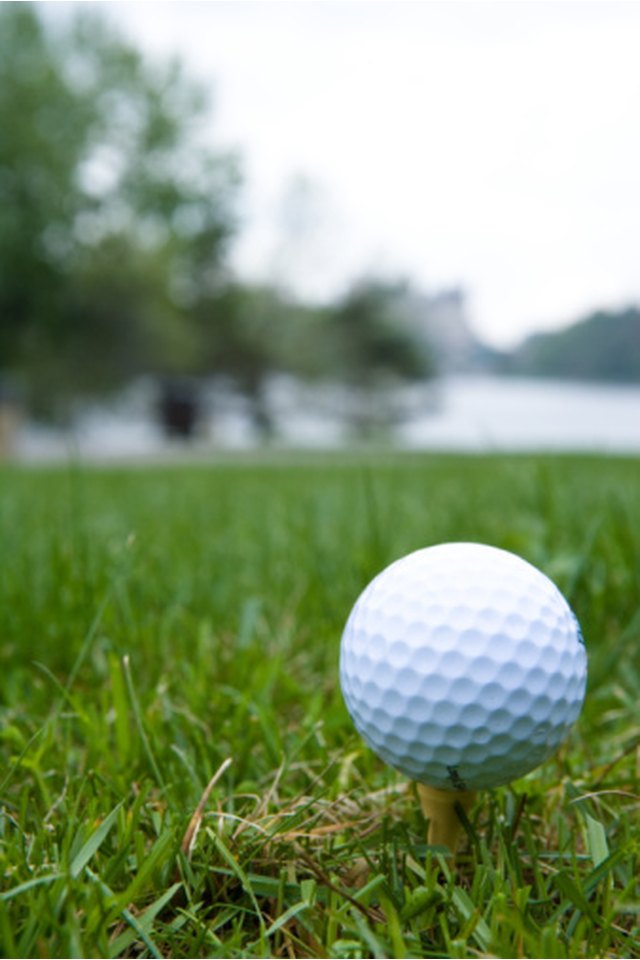Golf Rules When a Practice Swing Accidentally Strikes the Ball

While taking a practice swing during a golf game, you might accidentally hit your ball, moving it from its original position. The rules on how to handle a ball that is accidentally moved vary, depending on whether the ball is in or out of play. Knowing what to do in this situation may save you penalty strokes.
Teeing Ground
The United States Golf Association rules say if a player strikes a teed ball on the teeing ground during a practice swing, there is no penalty. Practice swings on the teeing ground are not considered actual strokes and the ball is not considered in play if accidentally moved during a practice swing. The ball can be replaced on the tee and the player can then tee off without incurring a penalty.
Addressing the Ball
When teeing off, once the player addresses the ball, it is considered in play. Any movement of the ball after this point, including accidentally striking the ball during any further practice swings, will incur a one-stroke penalty.
Ball in Play
After a player has teed off, the ball continues to be in play. If a player accidentally moves the ball at any time while a ball is in play, including during a practice swing, the player incurs a one-stroke penalty.
Replacing the Ball
If a ball is considered out of play and is accidentally struck, the ball is simply replaced to its original position without incurring a penalty. If a player accidentally strikes a ball considered in play, that ball must also be replaced. Failure to replace a ball that is in play results in the player incurring either a loss of the hole during match play, or a two-stroke penalty during stroke play.
Stroke
When taking a practice swing, if a player moves the ball, the swing is not counted as an actual stroke. A stroke is defined as a player intentionally attempting to move the ball. The rules recognize that striking the ball on a practice swing is not an intentional act.
Writer Bio
In Jacksonville, Fla., Frank Whittemore is a content strategist with over a decade of experience as a hospital corpsman in the U.S. Navy and a licensed paramedic. He has over 15 years experience writing for several Fortune 500 companies. Whittemore writes on topics in medicine, nature, science, technology, the arts, cuisine, travel and sports.
